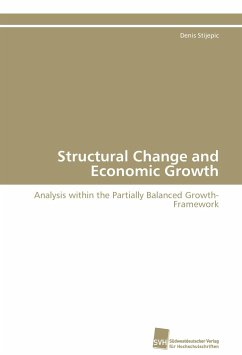Structural change, i.e. the change in the sector structure of the economy, is one of the most striking empirical facts of the development process. Well known examples of structural change are "industrialisation" and "transition to a services economy", which have key impacts on society, economy and especially (aggregate) economic growth. I elaborate the mathematical and theoretical foundations of structural change modelling; especially, I discuss the usage of partially balanced growth paths in structural change modelling and the integration of structural change into the neoclassical growth model (Ramsey-Cass-Koopmans- model). I systematise the literature on structural change by classifying different schools according to their modelling approach. Finally, I use my concepts for analysing some actual economic topics related to structural change and long-run economic growth. Especially, I analyse the Kuznets-Kaldor-puzzle, the impacts of offshoring on real GDP-growth and the effects of demand-shifts associated with population ageing.
Bitte wählen Sie Ihr Anliegen aus.
Rechnungen
Retourenschein anfordern
Bestellstatus
Storno








